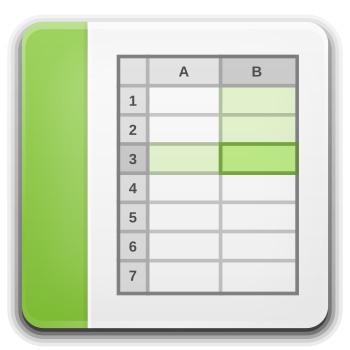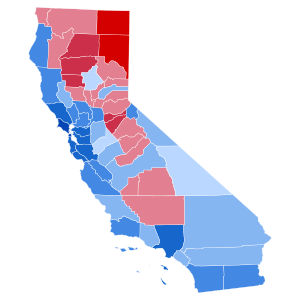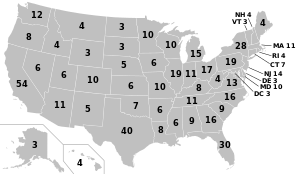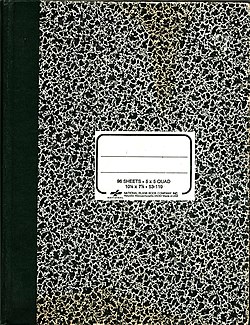Eventmath/Lesson plans/Proportions and voting power under the Electoral College
|
Please help develop this lesson plan!
|
| Lesson plan overview | |
|---|---|
| Title | Proportions and voting power under the Electoral College |
| Assumed knowledge | Proportions and basic spreadsheet calculations. Basic mechanics of the Electoral College in the United States (see Resources). |
| Activities | Students will propose different measures of the "individual voter power" of residents in a state, based on its population and its representation in the Electoral College. They will calculate these measures in a spreadsheet and compare their findings to the article's main assertion. |
| Class time | 60-90 minutes |
| Source | |
| "Voters In Wyoming Have 3.6 Times The Voting Power That I Have. It's Time To End The Electoral College". Huffington Post. 2016-11-10. Archived from the original on 2020-12-10. | |
| Want more lesson plans? Browse | |
Activities
editDiscussion of articles
edit- Preparation: Read the following article before class: "Let us abolish the Electoral College," October 6, 2020, The Hill. Discuss with students whether the stated opinions are supported by evidence, especially numerical evidence.
- Preparation: Read the main article from Huffington Post, although it's so short that perhaps this could be done together during class. Discuss with students whether this provides more contextual information than the first article.
- Discussion: Ask students whether the value of 3.6 in the title of the Huffington Post article refers to the ratio of a Wyomingite voter's power to a Californian voter's power or whether it refers to the reciprocal.
- Discussion: Ask students to define a quantified measure of individual voter power by state. Encourage them to think of more than one way to do this, emphasizing that there may not necessarily be "one correct way." However, for the sake of the rest of the lesson, make sure that students eventually decide to include at least these two measures:
- Number of residents / number of Electoral College votes.
- Number of Electoral College votes / number of residents. (This is the reciprocal of the first one.)
Data collection and analysis
edit
The main activity now is to create a spreadsheet containing the most recent census data showing each state's population, the number of Electoral College votes each state has, and the individual voter power in each state according to each of the proposed measures stated above. (For the instructor's convenience, here is a Google Sheets file with each state's population -- both 2010 and 2020 census data -- and their # of Electoral College votes.)
For the data collection, you may consider having students work on this in groups so they can continue the task as homework later. Or, you may consider working together as a class to create one spreadsheet, perhaps by assigning individual tasks to groups of students (e.g. "This group will find recent census data while this group sets up the spreadsheet calculations.")
For the data analysis, you may consider having some prepared discussion questions or a worksheet of problems for groups of students to solve using the spreadsheet. For example, you might ask:
- Which state's individuals have the smallest voting power by measure #1? What about measure by #2?
- Which state's individuals have the largest voting power by measure #1, and by measure #2? Could there theoretically be a state with a larger value than that? How large do you think it could be?
- Which states are traditionally considered "influential" in presidential elections? What are the values of their individual voting power, and what does that tell us, if anything?
Concluding discussion
edit
Ask students some probing questions to inspire further discussion, such as:
- Which of these measures is more helpful for quantifying what we actually want to measure?
- Which of these measures is more helpful for understanding the real world situation in question?
- Which of these measures do the articles actually use?
- And do the articles make all of this information clear?
Finally, use all of the data and any points raised in discussion to compare Wyoming and California, as the article does:
- Ask students whether they agree with the article’s headline, or whether they might have written it differently.
- Discuss with the students why they think Wyoming and California were chosen, out of all the states. How might the headline have been different if other states were chosen as comparison points?
Instructor notes
editComparison of the proposed measures
edit| Decimal notation | Scientific notation |
|---|---|

|

|

|

|

|

|

|

|

|

|

|

|

|

|

|

|
Discussing these finer points with students might help them better understand how we make conventional choices about definitions in mathematics.
- If you define individual voter power in a state as the number of residents per Electoral College vote (calculation: number of residents / number of Electoral College votes), then you will find that Wyoming has the absolute minimum and California has the absolute maximum. However, this is arguably "incorrect" for two reasons:
- The ratio of individual voter power in Wyoming to individual voter power in California would be 1/3.6 and not 3.6, as the headline states. So, this measure is at least inconsistent with the article's claims.
- Moreover, this measure is inconsistent with our intuition about how individual voter power might change. For example, if the number of Electoral College votes allotted to a given state were to instantly increase (say, due to a legislative action), then we would expect the power of each individual voter in that state to increase, as well. However, the number of residents per Electoral College vote would decrease.
- If you define individual voter power in a state as the amount of an Electoral College vote that each voter represents (calculation: number of Electoral College votes / number of residents), then you will find that Wyoming has the absolute maximum and California has the absolute minimum, and the ratio of those ratios is 3.6.
- This supports the article’s claim. Since this definition is consistent with intuition, as well, it better captures the quantity we are trying to measure.
- However, this measure leads to tiny numbers. This may prompt a mini-lesson on scientific notation or other ways of expressing and working with large/small numbers. Moreover, you may have to help students format the spreadsheet to display the values correctly and helpfully.
Limitations of the proposed measures
editEach of the measures is subject to limitations. For example, Wyoming and California are currently winner-take-all states, and Wyoming consistently votes for Republicans in presidential elections, whereas California consistently votes for Democrats. So, it is likely that all of Wyoming’s electors in a modern election will vote for the Republican candidate, in which case a Wyomingite who votes for a Democrat would not be represented in the Electoral College vote. The same can be said of a voter in California who votes for a Republican. Neither measure discussed in this lesson plan accounts for this issue, or others like it.
Despite such limitations, these quantitative measures do provide a starting point for discussion. An essay prompt in the Assignments section is intended to help students explore this tension.
Why Wyoming and California?
editWhy were Wyoming and California chosen as the highlights of the article? For one, the author lives in California. For another, they make for the most striking and disparate comparison between any pair of states, at least for the 2010 census data.
Assignments
editThere are many directions an assignment could take with this lesson. Here are just some examples:
- Discussion/Essay prompt: Ask students to write a headline that would more accurately represent what the methods in the article itself imply about the comparison between California and Wyoming, and to describe why they believe that headline is a more accurate representation.
- Essay prompt: Ask students to write an op-ed of their own that either rebuts the original article or provides more evidence in support of it. (It may be important to remind students that they can disagree with an argument without necessarily disagreeing with the conclusion, for instance.)
- Assignment prompt: Ask students to create an informative, shareable explanation of how the headline of the original Huffington Post article may mislead someone who doesn’t read the rest of the article. It may help to ask them to pretend they’re making something for their friends or family to see, like a Twitter thread or TikTok video.
- Project prompt: Ask students to recreate the data collection and analysis for presidential elections in the past. It may be interesting to look at population and Electoral College data from 20, 50, or 100 years ago and compare individual voter power in different states. At what point in time was there the largest disparity between states? Is this 3.6 value (WY/CA) the largest ratio, historically? And how has the voting power of individuals in a state changed over time?
- Extended project prompt: This idea goes well beyond the basic mathematics of the earlier parts of this lesson, but it may work for your context: What if the USA used a different apportionment scheme for allocating representatives in Congress? Students could run various algorithms to allocate reps and adjust the data in the spreadsheet accordingly. (Information about how representatives are apportioned to the states can be found on Wikipedia and on the website of the U.S. Census Bureau.)
- Essay prompt: In the article "One Man, 3.312 Votes: A Mathematical Analysis of the Electoral College," John F. Banzhaf III states that "the theoretical voting power of an individual may not coincide with his actual ability to affect the outcome of any particular election," citing issues such as "the political impotence of a Republican in a solidly Democratic state." Does this statement apply to the measure of individual voter power you chose? Describe any limitations of your chosen measure, and discuss the extent to which they affect its overall utility and explanatory power.
Resources
editBackground
edit
There is not much mathematical background presumed for this lesson plan, only a facility with calculations and proportions. Here is a Khan Academy lesson on ratios and proportions.
Part of implementing this lesson plan may involve first teaching students the basic mechanics of the Electoral College. Here are a few resources for that:
- "How the Electoral College works: A guide to the complex system the United States uses to select a president," from Reuters
- "How the Electoral College Works," from CGP Grey on YouTube
- "Does your vote count? The Electoral College explained - Christina Greer," from TED-Ed on YouTube
Explorations
editStudents may ask whether there are other resources that have defined this notion of "individual voter power," or you may wish to assign a project that asks students to find any and compare to their findings from this lesson.
- Example from the popular press: Wallet Hub has a list of "States with the Most & Least Powerful Voters" and a methodology section at the end that describes how they defined "powerful." Here's an archived version of the same page, in case the first link doesn't work.
- Example from the research literature: Banzhaf III, John F. "One man, 3.312 votes: a mathematical analysis of the Electoral College." Vill. L. Rev. 13 (1968): 304.
Finally, students may also be interested in public opinion around these issues. For example, a recent Pew Research report claims "Majority of Americans continue to favor moving away from Electoral College". Students may want to read this as part of the class discussion about this topic, or they may want to use this information when writing a response essay of their own.
Feedback
editHave you found this lesson plan helpful? Tell us about it!
Just click Endorse below to open up an editor and type your comments. When you're ready, they'll appear at the bottom of this section to help other educators looking for good lesson plans.
(Alternatively, if you see a way to improve this lesson plan, be bold and make an edit! You're also welcome to discuss the lesson plan or provide constructive feedback on its Discussion page.)


